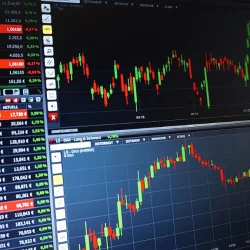Everything You Need to Know About Trading CFDs
CFDs happen to be the derivatives that allow traders to be able to take advantage of all the underlying financial instruments, during short positions, which means that prices are moving down, and long positions, which means that prices are moving down. In essence, a contract for difference (CFD) is basically a contract between the buyer and the seller.
Explaining CFD
This contract imposes a requirement that the seller will pay the buyer the difference of the value of an asset during the time of contracting and the current value of the asset. This is if the difference in value is positive. However, if the difference ends up being a negative one, then the buyer will instead have to pay the seller the difference between the values during the time of contracting and the current value.
Like any other tool of leverage, trading CFD has its own perks in terms of profits, as well as some disadvantages which are in terms of losses. Usually, traders use a contract for difference to help them when it comes to speculating on markets. They typically work as a buffer for the traders, by allowing them to take part in the global trading market, without having to deal with currency pairs, commodities, indices or shares, directly.
How trading CFD works
This happens to be a security that is simple, and one that is calculated by the movement of the assets, between the trade entry point and the trade exit point. When this is done, the assets underlying value is not put into consideration, as only the changing of the prices end up being computed.
By trading a contract for difference, investors are provided with the option of being able to make profits that arise out of price movements, without even having to be in possession of the underlying asset. This is made possible thanks to the contractual relationship between the broker and the client. Therefore, the use of any commodity, forex, futures exchange or stock is not needed.
Advantages of trading CFD
Compared to traditional trading, CFDs are able to provide a higher leverage to the trader. Even though an increased leverage can amount to greater losses, the requirement of a low margin will in turn create a greater chance of profits for the investors, and it will also mean that the trader will need a much lower capital outlay.
In addition, contracts for difference do not have any requirements when it comes to day trading. There are specific markets which require a trader to have certain amount of capital if they wish to day trade. They can even set up limits to the number of day trades that one can be able to make within a particular account. However, the CFD market is not regulated in this way, and therefore any account holder is able to day trade as they desire.
Another advantage with CFD trading is that one can get access to professional services without having to pay any additional fees. Even though CFD brokers are not the same as traditional brokers, they tend to offer the same kinds of offers which include limits stops and contingent orders such as, “if done” and “one cancels the other”. In order to buy, the trader will have to pay the asking price, and in order to sell, then he needs to pay the bid price. Some brokers do not charge any service fees, and they make money when the trader pays the spread.
Disadvantages of trading CFD
CFD undoubtedly offers some great pros, but there are a few shortcomings to it as well. For starters, it may be impossible for one to make any profits out of small moves, and this is because brokers are required to pay the spread on entries and exits. In addition, because of lack of regulation of the CFD market, one can never really be too sure about the broker that they are dealing with, as most of their credibility is based on their reputation.
More to Read:
Previous Posts:




